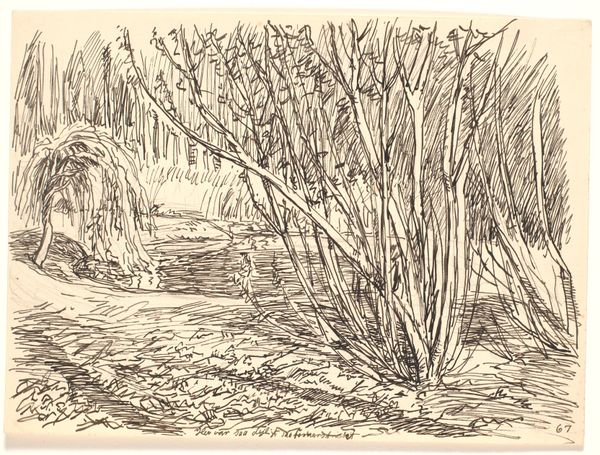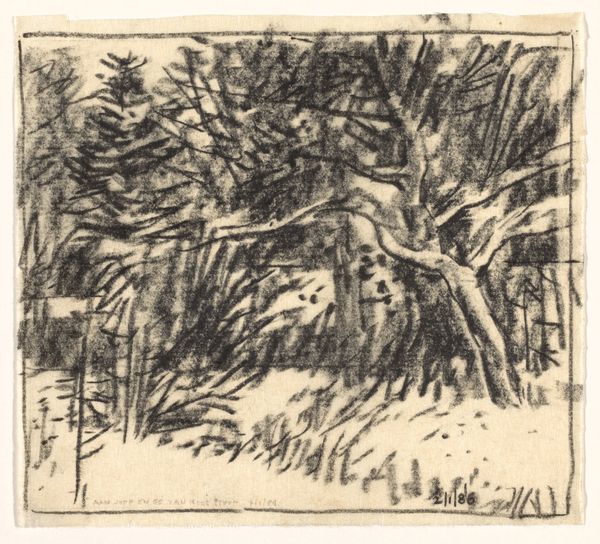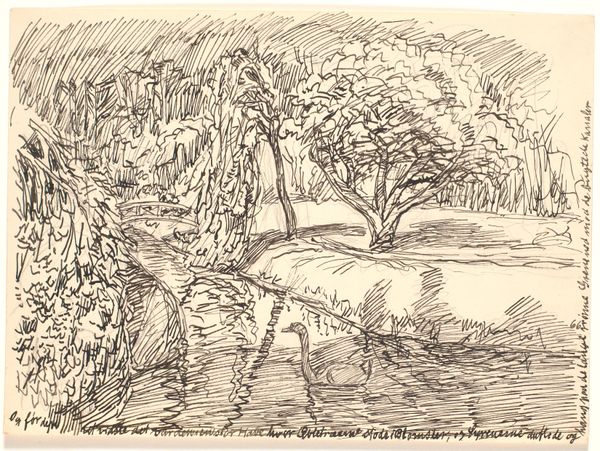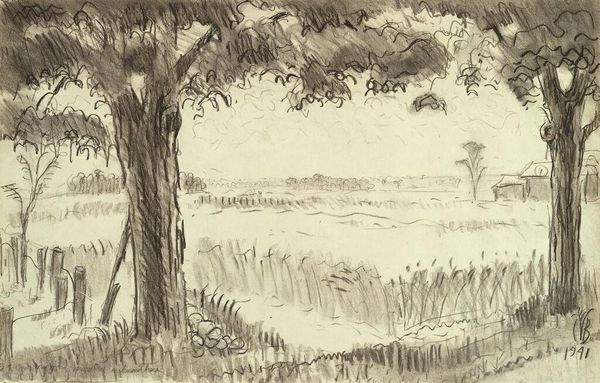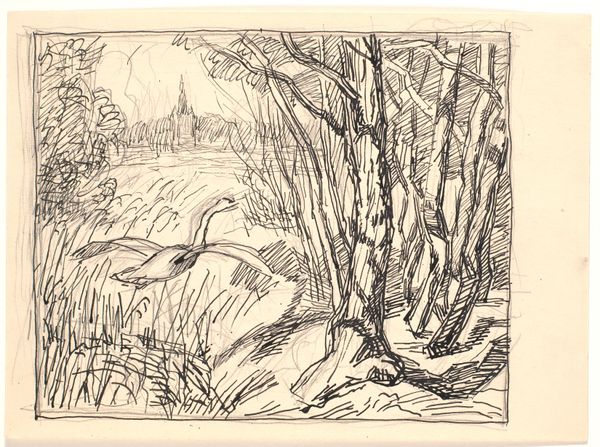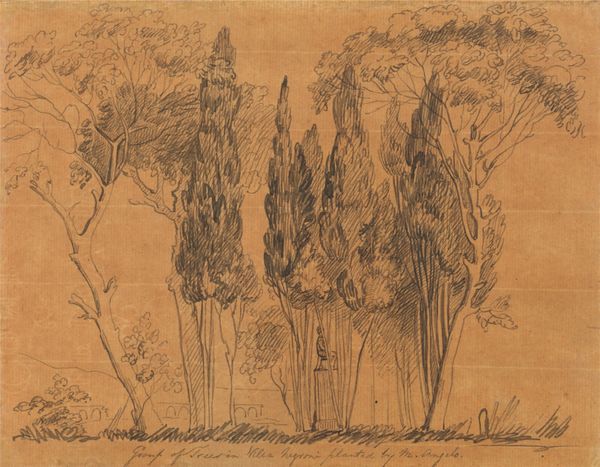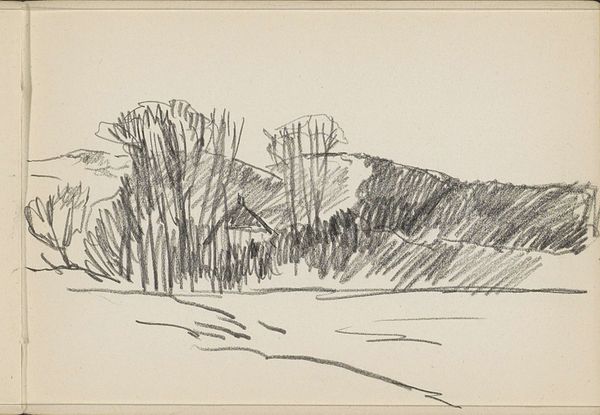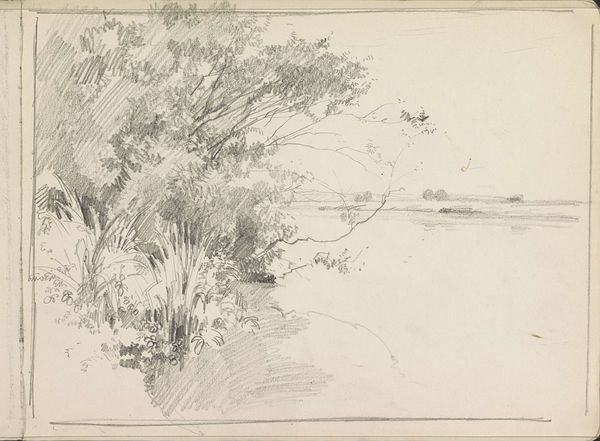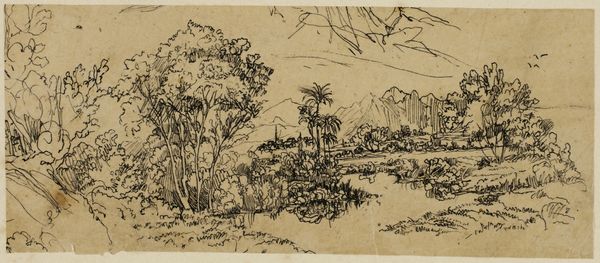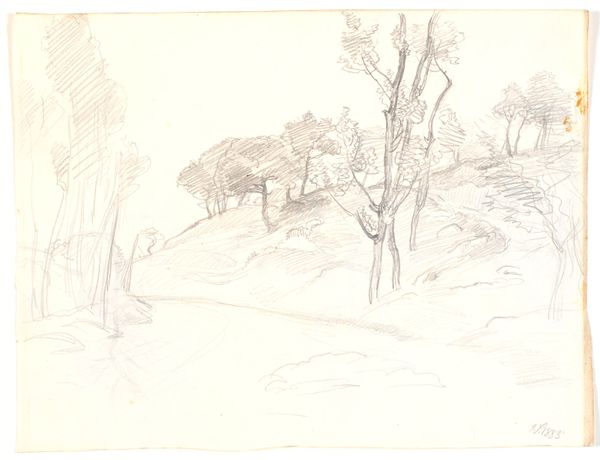
Dimensions: image: 386 x 600 mm
Copyright: © Tate | CC-BY-NC-ND 4.0 DEED, Photo: Tate
Curator: This is Peter Coker's 'Study for 'The Gorse Bush',' now held in the Tate Collections. The medium is listed as image, its dimensions roughly 386 by 600 mm. Editor: It has a stark, almost unsettling quality. The dense, dark strokes evoke a feeling of confinement, like being trapped within the thicket. Curator: Coker's known for his intense still lifes and landscapes. Gorse, with its thorny, resilient nature, perhaps became a symbol for postwar resilience, a common theme in British art then. Editor: The thorns themselves could represent defenses, barriers, not just in the physical landscape but also psychological ones. Perhaps reflecting the anxieties of the era? Curator: Precisely. And consider how the sketch-like quality removes any romanticism. It's a raw, almost brutal depiction of nature. Editor: It forces us to confront the less idyllic aspects of the natural world. A powerful statement on persistence and survival, visually and perhaps metaphorically.
Comments
tate 6 months ago
⋮
http://www.tate.org.uk/art/artworks/coker-study-for-the-gorse-bush-t07914
Join the conversation
Join millions of artists and users on Artera today and experience the ultimate creative platform.
tate 6 months ago
⋮
This drawing in black and white chalk and gouache on white paper is a study of dense and dark foliage. In the foreground, loose, often single, strokes suggest uneven terrain or tall grass. For the foliage beyond, Coker used closely drawn lines, which create a jagged silhouette and suggest the thorniness of gorse. The paper is oriented horizontally and there is a narrow, vertical margin that is blank at the paper’s left edge, along which the sheet was folded by the artist. As a working drawing, it bears signs of use in the studio, with occasional oil stains, paint spots and finger marks. The work is signed and dated 1956 in pencil in the lower right and left corners respectively.

